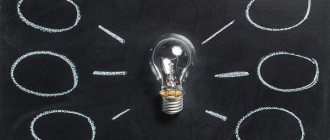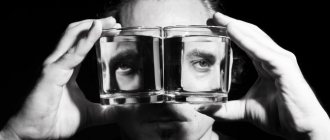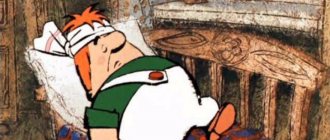Nowadays all kinds of aphorisms about the meaning of life are in fashion. Here are some of the most popular:
“The more perfect a person is on the outside, the more demons he has inside.” “The only person you should compare yourself to is your past self. And the only person you should be better than is you now.” “A person never gives up anything, he simply replaces one pleasure with another.”
But, putting these beautiful phrases in statuses, publishing them on social networks, quoting them in companies, most people do not even realize that they belong to the famous psychologist of the first half of the 20th century, Sigmund Freud, and reflect the whole essence of his teaching, known as psychoanalysis.
What is psychoanalysis
Psychoanalysis is a psychotherapeutic direction created by Freud, an effective method of treating various mental disorders that has gained wide popularity.
This is the first direction in psychology and psychotherapy, worked out in detail in terms of theory. Two hypostases of a person’s personality are clearly described - the unconscious (hidden, repressed, unconscious) and the conscious (superficial, visible, conscious, understandable). They constantly come into conflict with each other - hence the internal conflicts that ultimately lead to mental disorders. But the most important thing is that the unconscious almost always wins. It is this that becomes the motivator of most actions and decisions. The task of psychoanalysis is to open it and transfer it to the plane of consciousness.
Being a key concept, personality in psychoanalysis is maximally represented from the point of view of both hidden and conscious motives that determine its development and improvement throughout life.
What does this direction study? The subject of the study is hidden motives from the unconscious that provoke the development of various psycho-emotional disorders of personality and behavior. They are revealed through the free flow of thoughts expressed by the analysand (patient).
Today, the psychoanalytic direction is represented by different schools. But they are all united by basic concepts - the division into the conscious and unconscious and the search for the origins of problems in childhood. In psychology, this is a powerful tool for eliminating unconscious mechanisms and habitual patterns that interfere with the realization of desires and social adaptation.
From the history
Freud
The founder of psychoanalysis is Sigmund Freud (1856-1939), a famous Austrian psychologist, psychiatrist and neurologist. Practicing in different hospitals, he gradually accumulated experience in order to later formalize it into one clear and well-founded theory.
- For a long time he worked with patients suffering from neurotic and hysterical character traits.
- Then he consulted aphasic children (with speech impairments). He revealed that their problems are not caused by physiology, but by mental reactions.
- He completed an internship with the famous neurologist J.-M. Charcot, studying general paresis.
As a result of his extensive and varied practice, in 1895 he wrote the book “Studies in Hysteria.” This is the first theoretical basis of psychoanalysis. It is in it that the idea is formulated that the causes of most mental disorders are suppressed, hidden in the unconscious memories of traumatic situations from childhood. Here Freud suggested that they are all somehow connected with sexual desires.
In 1900, his second major work, “The Interpretation of Dreams,” was published. It describes the meaning of dreams for the human psyche. In his opinion, it is they who reveal the essence of the unconscious, which manifests itself in the form of symbols. They just need to be decrypted. The same book presents a detailed “topographic model of the psyche,” its structure and operating principle. According to her, social prohibitions and educational frameworks displace indecent sexual desires into the realm of the unconscious. This process almost always ends with a feeling of increased anxiety and the development of mental disorders.
Sigmund Freud (1856-1939)
Freud's psychoanalysis (Freudianism) subsequently constantly developed, expanded and was critically rethought. On its basis, new schools, trends and branches from classical theory appeared. Most often they were led by former colleagues and students of Freud. For example, A. Adler and K. G. Jung. Although on many issues they sharply disagreed with their teacher.
Jung
Many experts note that Jung's psychoanalysis is a direction radically different from Freudianism. Carl Gustav Jung (1875-1961) was a Swiss psychiatrist and teacher who developed the doctrine of archetypes. These are structural elements of the collective unconscious (there are archetypes of the baby, maiden, mother, rebirth, spirit, trickster, etc.). With their help, you can interpret not only dreams, but also myths of different nations. The goal of Jung's direction (as defined by the psychoanalyst himself) is the individuation of the individual. This is a process of mental development when individual abilities (talents) and unique characteristics of a person are fully realized.
Jung's concept of psychological types has gained particular popularity. The classification is based on psychological attitude (extroverted or introverted) and mental functions (thinking, feelings, sensations, intuition).
Neo-Freudianism
The second, later wave of the emergence of new psychoanalytic movements is neo-Freudianism. The most prominent representatives are E. Fromm, K. Horney, G. S. Sullivan, J. Lacan and others. They tried to find common points of contact between psychoanalysis and the social and human sciences.
Erich Fromm (1900-1980) - German sociologist, social psychologist, philosopher, representative of the Frankfurt School. He is the founder of neo-Freudianism and Freudo-Marxism. Linked Freud's psychoanalysis with Marxism and ethics.
Karen Horney (1885-1952) was an American psychologist and a key figure in neo-Freudianism. Shifted the emphasis from sexual desires as the main motivators of human behavior to the impact of the surrounding social environment. She outlined her views and ideas in the book “New Paths in Psychoanalysis.”
In Russia
In Russia, this trend became incredibly popular in the 1920s. Ivan Dmitrievich Ermakov (1875-1942) was a Russian psychiatrist and psychologist, who was also an artist and literary critic. Considered a pioneer of Freudianism in the USSR. He founded the State Psychoanalytic Institute and translated the works of Freud and Jung into Russian. Since the 1930s. psychoanalysis was persecuted and forgotten until the 1990s.
Modern psychoanalysis has more than 20 schools and movements. Their theories and approaches to treating disorders differ so radically that it is extremely difficult to find one source for them.
Psychological defense mechanisms
The founder of psychoanalysis argued that the human psyche, tuned to pleasure and aggression, creates protection. This formalizes behavior within a framework acceptable to society.
- Negation. A person at an unconscious level denies obvious facts. For example, the harm of drugs or the destructiveness of relationships.
- Repression helps to get rid of unacceptable stimuli. In their place are placed incentives that are pleasing to society or the moral principles of the person himself. Good manners developed in a child by strict parents may limit his need to behave more freely.
- Projection appears when a person cannot come to terms with his true motives, feelings and desires. He transfers them to those who do not have them. This is where stories appear about people’s actions that they did not commit.
- Identification is the reverse phenomenon of projection. In this case, a person ascribes to himself qualities that are alien, but desirable for him. A person endows himself, for example, with courage that is not characteristic of him.
- Rationalization. A person finds a reasonable explanation for his actions. But, at the same time, his actions are based on reasons that resonate painfully in his consciousness.
- Inclusion. Traumatic stimuli are devalued by their introduction into the system of stronger incentives. For example, problems in the family become less significant against the background of global problems of the country’s economy and standard of living.
- Substitution. One object of influence is replaced by another, weaker one. For example, a person takes out his anger on family members instead of the boss who angered him. At the same time, the boss acts as a figure with stronger influence.
- Insulation. Traumatic stimuli are repressed into the unconscious. Due to their influence, disorders can be observed: depersonalization and split personality.
- Regression. During protection, a return to previous stages of development is observed. The person returns to the behavior that he used, for example, in adolescence.
- Reactive education. A person’s motives are transformed into opposite phenomena, close to those approved by the social environment. For example, a kind person can act bitterly.
- Sublimation. Energy from inappropriate manifestations is directed into other areas of life. For example, the need for adrenaline is assessed by society as unreasonably senseless. Therefore, a person chooses a profession associated with risk. At the same time, other people will approve of such a choice.
Kinds
Classic Freudianism
The basic concept in a nutshell: any mental disorder is the result of a conflict between the unconscious (formed under the influence of psychosexual development) and the conscious (dictated by upbringing and social norms).
Jungian psychoanalysis
Another name is analytical (complex) psychology. The goal is to comprehend and integrate the deep forces and motivations of human behavior through the phenomenology of not only dreams (as in Freud), but also folklore and mythology. The key concept is the collective unconscious.
Statistical
Olga Pertseva’s author’s technique, based on the square (psychomatrix) of Pythagoras. Allows you to create a digital portrait of a person, uncomplicated by society’s patterns imposed by patterns of thinking and behavior. One of the directions in numerology.
Existential
The technique of existential psychotherapy developed by J.-P. Sartre. According to her, a person is a complete integrity, and not a complex of behavior patterns that come into conflict with sexual instincts (as with Freud). The main tool is observation.
Humanistic
The founder is Fromm. Denies the leading role of sexual desires in personality development. Focuses attention on other factors of its formation - sociological, political, economic, religious and cultural.
Structural
The founder is J. Lacan. A direction that uses the special meaning of language to characterize the unconscious. It is actively used for the treatment of speech disorders caused by mental disorders and childhood trauma.
Ego psychology
The leading role in the psyche is assigned to the Ego (according to the classical concept, it was played by the Id). Representatives: A. Freud (the youngest daughter of Sigmund Freud), E. Glover, E. Erikson.
Object Relations Theory
The basis of the British school of psychoanalysis. The basic idea is that people’s attitudes towards the world around them in adulthood are formed under the influence of experiences in childhood. The main representatives are M. Klein and D. Sandler.
Modern schools with a psychoanalytic approach to the treatment of disorders are also Kohut's Self psychology, Sullivan's interpersonalism and Stolorow's intersubjectivism.
Theory
An analysand is a patient with whom a psychoanalyst works.
Metapsychology is the entire theory of psychoanalysis.
Topographic model of the psyche:
- conscious - its superficial, understandable, visible part;
- unconscious - hidden, incomprehensible, mysterious, unconscious;
- preconscious - borderline, located in the area of the unconscious, but breaking out during certain situations of choice or in dreams.
Structural model of the psyche:
- Id (It) - instinct, obeys the principle of pleasure;
- Ego (I) - contact with the outside world through perception, controls behavior and thinking;
- Superego (Super-I) - moral norms, values based on moral prohibitions and formed in the process of education.
Personality structure according to S. Freud
Stages of psychosexual development - experience that leaves an imprint in the form of moral attitudes, character traits, behavior patterns:
- Oral phase (from birth to 1.5 years) - dominance of the id.
- Anal (1.5-3.5) - the formation of the super-ego under the influence of norms, rules, restrictions, prohibitions.
- Phallic (3.5-6) - increased interest in sex, which most often leads to Oedipus or Electra complexes.
- Latent (6-12) - absence of manifestations, break.
- Genital, adult (from 12 years old).
A protective psychological mechanism is an unconscious mental process aimed at eliminating negative experiences:
- substitute;
- compensatory;
- displacing;
- denying;
- projecting;
- sublimating;
- rationalizing;
- retrogressive.
These are the basic defense mechanisms described by Freud. Today the list has been significantly expanded and includes more than 30 mental processes.
Life instinct and death instinct
Instincts are the driving, motivational forces of the individual, biological factors that release reserves of mental energy. For Freud, instincts are not innate reflexes, but that part of the stimulation that comes from the body. The purpose of instincts is to eliminate or reduce stimulation through certain types of behavior (for example, eating or sexual activity).
Z. Freud identified 2 large groups of instincts: life and death.
Life instincts (Eros) include hunger, thirst, sexual activity and are aimed at the self-preservation of the individual and the survival of the species. These are creative, life-sustaining forces. The form of psychic energy in which they manifest themselves is called libido. Libido is a certain amount of mental energy that finds release exclusively in sexual behavior.
Freud believed that humans also have a desire for death. Death instincts (Thanatos) are destructive forces that can be directed both inward (masochism or suicide) and outward (hatred and aggression). Unlike the energy of libido, as the energy of the life instincts, the energy of the death instincts has not received a special name. However, Freud considered them biologically determined and as important in the regulation of human behavior as the life instincts. Towards the end of his life, Freud increasingly became convinced that the instinct of aggression could be very powerful as a motivating factor.
Basics
Key points:
- human behavior, knowledge of the surrounding world and experience are determined by internal drives;
- they are irrational and unconscious;
- attempts to understand them cause psychological resistance, which manifests itself in the form of defense mechanisms;
- individual characteristics of behavior and personality depend on events that occurred in early childhood, at different stages of psychosexual development;
- conscious perception of the surrounding world and the material of the unconscious (repressed) come into conflict with each other;
- it leads to various psycho-emotional disorders: neuroses, depression, neurotic character traits, phobias;
- You can free yourself from the area of the unconscious if you become aware of it (but this can only be done with the help of a professional).
These are the basic ideas of psychoanalysis on which work with the patient is based.
Three structural components of personality
The id (ego) is the sum of the instinctual drives that a child possesses at the beginning of his life. He is capable of some elementary thoughts and can set himself desired goals (primary thought processes), but, as one would expect, his needs are reduced to the most primitive. In order for a person to interact more or less conflict-free with the world in his daily life, he develops an ego (self).
Ego (I) - this component of the personality approaches rational thinking (secondary thought processes), selects appropriate goals and tries to reconcile the id and superego (super-ego).
Superego (super-ego) - develops towards the end of childhood, represents a set of ideals (often overly strict), and actually acts as an “inner parent”, imposing moral standards. If the ego feels threatened by the id or superego, various defense mechanisms come into play. One example is the famous repression, in which unacceptable thoughts are blocked in the unconscious. In the most extreme cases, this can lead to psychologically induced sensory disturbances. In hysterical deafness, for example, a deaf person literally cannot hear anything. His ears and the physiological mechanisms associated with hearing function normally, but all sounds coming from outside do not reach the organ of hearing.
Practice
General treatment regimen
The analysand verbalizes (pronounces) thoughts based on free associations that arise in his head, as well as fantasies and dreams.
Next, the psychoanalyst, based on this material, finds unconscious conflicts that are the causes of all the problems of the analysand.
He eventually interprets them to find a way to solve problems.
Examples from Freud's private practice
In his works, Freud described in detail not only the theory of psychoanalysis, but also the clinical cases that he himself encountered. There are 43 of them in total, but 5 of them are the most famous. They demonstrate how psychiatrists should tailor their sessions depending on the diagnosis they are dealing with.
The psychoanalytic approach is effective for diagnoses such as:
- alarming and conversion hysteria;
- obsessive-compulsive neurosis;
- psychoneurotic depression;
- neurotic character traits;
- phobias;
- psychosomatics.
Contraindications are various forms of schizophrenia and manic-depressive psychosis. The psychoanalytic approach to the treatment of impulsive neurosis, perversion, addictions and deviant behavior is decided on an individual basis.
Methods of psychoanalysis
Free associations
Is the basic rule of psychoanalysis. The projective method consists in asking the analysand to freely say whatever comes to mind. At the same time, he can even express what seems absurd and obscene to him. The task of the psychoanalyst is to see in this stream of thoughts, isolate and analyze the unconscious, and connect it with the patient’s childhood and dreams.
Dream interpretation
The analysand is asked to tell all his dreams in the smallest detail over several sessions. It is in them that the unconscious is hidden. In his work The Interpretation of Dreams, Freud explained the meanings of many dream symbols that are still used in psychoanalysis today. Most of them are associated with hidden sexual desires.
Interpretation
The central stage of any psychoanalysis session. The psychoanalyst deciphers symbols from free associations and dreams for the patient and explains the essence of the internal conflict. The analysand, in turn, must accept and understand this interpretation. Only in this way can he begin to undermine the system of stagnant pathological, obsessive experiences that has developed on the basis of the contradictions of the unconscious and the conscious.
Resistance
A protective mechanism of the psyche that prevents penetration into the unconscious. This is the force that maintains the painful state. It prevents the patient from saying everything that is in his head. Often this is upbringing or social stereotypes.
Transfer
Another name is transfer. Unconscious transfer of previously experienced feelings to a completely different person (not the one to whom they were directed before). Including a psychoanalyst.
Elaboration
The last stage with the analysand is when a restructuring of the psyche occurs. The main task is to change habitual behavior and established relationships through liberation from pathogenic patterns.
These are the main techniques used by a psychoanalyst in working with various mental disorders.
Conclusion
The ongoing debate about the validity of Freud's theory of personality development should come as no surprise. It should come as no surprise that most people defend themselves against Freud's incriminating concepts. Freud himself believed that he was destined by fate to interrupt the “sleep” of humanity and tell them such an unpleasant truth about himself. As the great psychiatrist once told the writer Zweig, the main task of his theory is to teach a person to fight the “demon of irrationality”, while using the most rational principles of his mind.
Freud was very proud of his reputation as a “destroyer of illusions.” The product of his research work - psychoanalysis - became the main enemy of the deceitful politeness and secrecy of the society of that time. In 1930, in a letter to Albert Einstein, Freud wrote: “I no longer consider it one of my virtues that I always tell the truth whenever possible; it became my profession.”
Topics: Child psychology, Personal growth, For parents
Criticism
Throughout its existence, the psychoanalytic approach in psychology has been criticized from various points of view.
The main points of criticism:
- long course of therapy (Freud described a case where he conducted 1,017 sessions over 6 years of treating one patient);
- high risk of iatrogenic effects and conformism;
- ineffectiveness of short-term use;
- behavioral psychotherapy is 2 times more effective than psychoanalysis;
- the patient does not work on himself, he is completely dependent on the psychoanalyst;
- The irrationalism of the psychoanalytic trend is too confusing and not understandable to many people.
English biologist Peter Medawar called psychoanalysis the largest intellectual fraud of the twentieth century.
Despite all the criticism, the philosophy of psychoanalysis has played an important role in the development of society. It is actively used in almost all humanities. Without it, even the sexual revolution would have been impossible. Now this direction, represented by more than 20 schools and individual movements, is practiced as widely and often as it was a hundred years ago when it was created.
Video
Real Chinese Milk Oolong Tea Green Leaf Ceremony (Milk Oolong Tea, Nai Xiang Jin Xuan, Golden Flower with Milk Aroma, Turquoise Tea), Light Milk Taste, 200 g.
389 ₽ More details
Real Chinese Milk Oolong Tea Green Loose Leaf Ceremony (Milk Oolong Tea, Nai Xiang Jin Xuan, Golden Flower, Turquoise Tea), Subtle Natural Taste, 100 g.
237 ₽ More details
Medical tweezers









